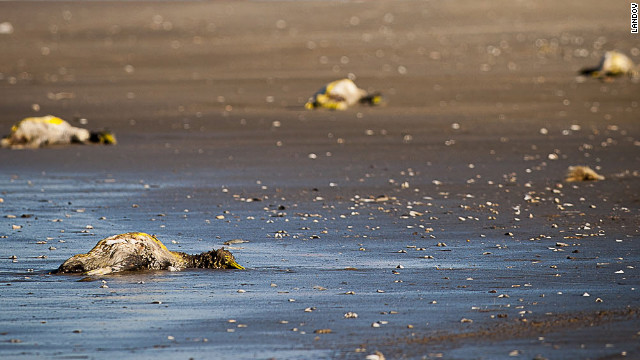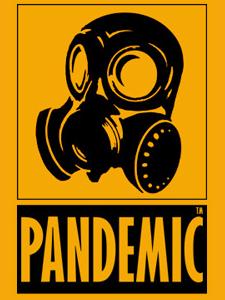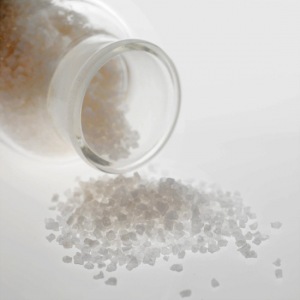Tag Archives: state
8 Tips For Surviving A Zombie Apocalypse
Here at What Culture we consider ourselves to be experts in many different things. Sure we have massive brains filled with the latest gaming news, movie tidbits and comic book geekery but did you know that we’re also the leading experts on surviving a zombie apocalypse? Darn tooting we are! In fact, if the Government called upon us to protect you lovely people from having your brains eaten by your dead grandma we’d know exactly what to do. So it seems only fair that we share this information with you – our dear readers – just in case we’re a bit busy helping the Governments of the world sort out their living dead problems.
So let’s begin with the basics.
1. How Likely is A Zombie Outbreak
According to the BBC, researchers in Canada concluded that unless a Zombie outbreak was dealt with quickly and aggressively it would in fact lead to the downfall of civilisation. You see, people have actually been funded to look into this kind of ‘eventuallity’ under the pretence that the idea of an outbreak of Zombieism works in much the same way as any other alien infection and thus the research can help prepare for such a real life scenario. Personally we think this is all part of the Government’s attempts to keep Joe Public in the dark. Research is being undertaken to prepare for Zombies, like it or not.
If you’re still unsure about the reality of Zombies then just take a look at nature and you’ll see that such infections already exist within the animal world. Take Toxoplasmosa Gondii for example. It lives inside the body of the common Rat, but the only place it can bread is inside the intestines of a Cat so it takes over the brain of Mr Rat and makes him get himself eaten. The parasite actually programmes the Rat, much like a similar parasite could programme the human brain. In fact over half the world’s population is infected by this little bugger already. What if it were to evolve? Scary thought, hu?
Need more examples? How about Haiti, home of the term Zombie. People there were infected with an acute neurotoxin that actually wiped the memories of the victims, left them in a barely conscious state and caused them to shuffle around performing basic daily tasks such as eating. There are books and documentaries on this – and we don’t mean ones called Zombie Flesheaters. And if you’re STILL not convinced then have a look at the symptoms of Mad Cow’s Disease – muscle spasms, dementia, rage, changes in gait – it’s all there in black and white for the sceptics out there. All that’s keeping us safe at the moment is the fact that none of the aforementioned causes have taken hold … yet.
2. Know Your Zombies
Like with most things there are different types of Zombie. As we haven’t been face to face with any as of yet it’s safe to assume that any of the weird shit you’ve seen on TV or in a video game could actually be true. However, tradition dictates a certain type of Zombie – at least in the first instance. Who knows if they can evolve or adapt over time?
Here’s what we do know:
1. Zombies can be both the reanimated corpses of the already dead OR any living thing that has been bitten and thus transformed.
2. Zombies are slow. Any notion that they may be able to run should be disregarded. Sure, if you’ve just been turned then you may have use of your full leg muscles a while but rigor mortis reaches maximum stiffness after 12 hours, so beyond that we should assume the creature cannot run.
3. The brain of a Zombie is not entirely dead. It continues to operate at 0.5%. No Zombie will ever win a pub quiz then – but they are brighter than most of the people who go on Jeremy Kyle’s TV show.
4. The primary weapons of a Zombie are it’s hands/claws and it’s teeth. You’re not likely to change sides if you get scratched but a bite will damn sure bring about a sudden case of death. Well, more like a slow agonising case actually.
5. The original cause of a Zombie plague grossly affects how us humans can be turned. For example, if the cause is airborne then you might become a Zombie just by breathing. Likewise the original Zombies may just be reanimated corpses and you could be turned by a bite – the transference of saliva which carries a parasite etc. Or in some cases you may already be carrying whatever it is that turns you (like in The Walking Dead) and when you die you will become a member of the undead without ever coming into contact with one. Let’s just hope that if/when Zombies walk the Earth the only way for you to be turned is by a bite. At least that gives you more of a fighting chance at survival.
ZOMBIE SURVIVAL – Survival tips for the urban living: Part 1 – Nuclear Radiation
Though many survivalists like to prepare for TEOTWAWKI (the end of the world as we know it), joblessness and homelessness have led me to the end of the world as I know it. With coffee in hand, I opened the warehouse door of my temporary digs to greet the dawn. Only, it’s noon, there’s a downpour, and the smell of rubber from a pile of decomposing tires greets me. This marks Month 4 in New Orleans and two years since I was laid off.
In this vein, I finally started reading Mat Stein’s two survival books, When Technology Fails (2008) and When Disaster Strikes (2011). I also headed over to Jim Rawles’ Survival Blog and Mat’s website, whentechfails.com.
Instead of a lone-wolf, Mad Max world which plays well on film, Stein reasonably argues that individual survival relies on a community of like-minded folks. So plan your survival migration or shelter with room for your core group. The essential wisdom from both books and most survival websites is to plan a strategically sound survival budget, taking into account the climate of where you expect to be after you hit the road.
Few experts would call the US a failed or fragile state given to eco-migration, but most Americans already live in toxic zones, with our land, air and water being systematically poisoned by industry. New Orleans is only one of many areas suffering from hyper-industrialization and weather destruction. Locals call the corridor from here to Baton Rouge, “Cancer Alley.”
Thanks to Corexit and the Macondo Blowout (among hundreds of other oil “spills”), Gulf seafood is unfit for human consumption, and anglers and beachcombers are suffering from a host of health issues including respiratory failure. Birds, turtles, dolphins, and other sea life are dying in mass numbers or are showing up deformed, while federal agencies insist all is well.
I met a man who helped with the cleanup. The toxic brew severely damaged circulation in both his legs, leaving him wheelchair-bound. Grandmothers of the Gulf organizer, Laura Regan, insists her and her husband’s respiratory problems are from swimming in the Gulf after authorities promised the water was safe. She, along with most coastal residents, believe they are still spraying Corexit today. That may explain why the Louisiana Senate buried SB 97 in committee last year, which would have banned Corexit and any other oil dispersant not categorized as “Practically Non-Toxic.”
My romantic notion of sticking my toes in the famous Mississippi after I got here was sullied by the strong industrial odor wafting from the river. It sickened both of us who walked the levy that day.
All over the planet, giant multinational corporations are singly and jointly destroying the landbase for huge swaths of people, and New Orleans is no exception. Three major wars settled this area so that tens of thousands of oil wells could be built, right along with all the chemical and oil refineries, labs, agrochemical dumps, and the 25-year-old Waterford nuclear plant, 20 miles outside the city.
Because Fukushima radiated the Northern Hemisphere, because fracking releases rock-bound uranium that contaminates our local water table, and because I’m in Cancer Alley just miles from Waterford, this first essay focuses on nuclear survival.
Some nuclear survival tips are obvious. Dr John W. Gofman, a distinguished medical and nuclear scientist who worked on the Manhattan Project to develop the atomic bomb estimated in 2001 that 75% of US women who develop breast cancer get it from medical radiation. Simply refuse such tests, including airport body scanners.
When the US Supreme Court thwarted public will and handed Bush Florida, and thereby the presidency, we were led into 9/11 and nuclear war on the Middle East and Africa. Bob Koehler writes:
“Iraq Syndrome must include awareness of our toxic legacy, in particular the radioactive fallout resulting from exploding several thousand tons of depleted uranium munitions. Last year, the International Journal of Environmental Research and Public Health published a study of the devastated city of Fallujah, pointing out that, among much else, it is experiencing higher rates of cancer, leukemia and infant mortality than Hiroshima and Nagasaki did in 1945. And birth defects abound: ‘Young women in Fallujah are terrified of having children,’ a group of British and Iraqi doctors reported.”
Industrial civilization’s war on the environment is no less radioactive. The US hosts 25% of the world’s nuclear power plants, and even without incidents or accidents, they leak radiation into the local environment, as evidenced by the cancer clusters around nuke plants. Being in New Orleans, I’m exposed daily to whatever is dumped in the Mississippi, including leaking radioactive particles from the several nuke plants that dot its length.
Lest anyone believe health officials and nuclear energy proponents that the harm from Fukushima is minimal (and no longer poses a threat), all they need do is look at the Chernobyl casualties, where only one reactor was involved. Last year, researchers published their review of over 5,000 scientific articles and studies and concluded that a million people have succumbed to Chernobyl radiation. According to one source, the authors explain:
“Emissions from this one reactor exceeded a hundred-fold the radioactive contamination of the bombs dropped on Hiroshima and Nagasaki. No citizen of any country can be assured that he or she can be protected from radioactive contamination. One nuclear reactor can pollute half the globe. Chernobyl fallout covers the entire Northern Hemisphere.”
Fukushima lost four reactors, with three in complete meltdown, but pro-nuke officials from the World Health Organization on down promise thru lying teeth this poses little to no threat to our health or the environment. As Chernobyl showed, in 30 years, we can expect many Northern Hemisphere survivors to sport tumors and other cancers resulting from radiation-damaged DNA. We can only pray for the unborn, from those healthy enough to reproduce.
Expectedly, US officials also lied about the Three Mile Island nuclear disaster, while cancer rates jumped for those nearby. Richard Wilcox wrote an excellent article on all this that is well worth the read:
“Independent testing in Japan has revealed that fallout from the accident and ongoing accumulation has contaminated food supplies in the Northeast and Tokyo.”
From plutonium-laden fish, “the most toxic substance known in the universe,” to radioactive cesium in California tuna, Wilcox itemizes the destruction of our food supply. Radioactive fallout, of course, contaminates grazelands, meaning our milk and dairy products are also contaminated.
All of us have cause, right now, to ensure our water and food is clean and radiation-free. All of us have sound reason to become survivalists. Here are some tips to protect you and yours…
SIGNS OF THE APOCALYPSE – 500 dead penguins wash up along Brazil’s beaches

- Hundreds wash ashore in Rio Grande do Sul, biologists say
- Birds are decomposed but otherwise seem unharmed
- Penguins migrate from Argentina about this time of year, biologist says
(CNN) — Marine biologists in Brazil have launched an investigation after hundreds of dead penguins washed ashore in the southern state of Rio Grande do Sul, they said Monday.
More than 500 birds have been found on beaches over the past week, and that figure has steadily risen over the past few days, according to experts from Brazil’s Center of Coastal and Marine Studies (Ceclimar).
Japan’s fugitive penguin captured
The figure has been especially puzzling for the marine scientists, who say the birds are badly decomposed but otherwise seem unhurt and without oil stains.
The discovery follows an official inquiry launched by the Peruvian government this year when close to 3,000 dolphins and more than 500 pelicans washed up along the country’s northern coast.
Mauricio Tazeres, a biologist from the Center of Coastal and Marine Studies, said “it’s actually pretty common for us to find at least some penguins but never in this number.
Stolen penguin back safe at Sea World
“The animals usually migrate from Argentina around this time of year in search of food and warmer weather, and each year, some do wash up. But over 500 is a very, very high number, and right now, I simply do not have an explanation.
“We have collected some samples for autopsy, but the animals are so decomposed, it is going to make analysis very difficult,” he said. “The animals were a lot smaller in terms of size and weight than normal penguins, so we think it will be natural causes, but it is certainly very strange.”





